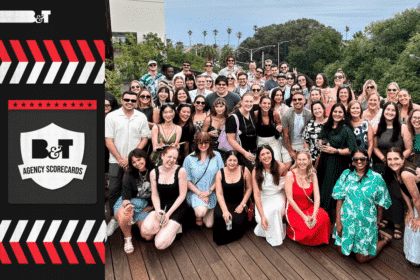Gillian Yeap, the strategy director at Melbourne digital PR firm Keep Left, is on the ground and running at SXSW. Yeap’s been taking in a number of sessions and, she says, there appears to be one recurring theme – the art of storytelling…
If I received a dollar for every time I’ve heard the word ‘storytelling’ over the last few days, I’d probably have my SXSW ticket covered. The reality is, we’ve been telling stories for thousands of years. The first book was printed in 1454. So why all the fuss now? One word: technology.
Technology has given us the tools to tell stories beyond black text on white, and the ability to share these stories far and wide through the Internet.
There’s certainly been a lot of talk about the different technology that’s adding to today’s world of storytelling; from virtual reality and interactive video, to the re-emergence of GIFs.
Here’s a closer look at how technology is revolutionising and what we expect to see and hear more about over the next 12 months:
Virtual reality
The breakthrough technology this year, it feels like every second SXSW session has been about the ‘immersive experience’. According to SuperData Research’s Director of Research and Insights, Stephanie Llmas, the VR market will be worth $4b by the end of the year, made up mostly by hardware, and $9b in a couple of years’ time once the software catches up.
We’ve definitely seen some great use of it already, with Lufthansa’s Head of Digital Innovations, Torsten Wingenter, taking us through how the brand used VR to promote its business class service. What better way to try before you buy and know exactly what you’re getting for your money.
Once the software catches up to the hardware market, there’s no telling where VR will take us. However there are three challenges they’ll need to address:
- It can get lonely: VR is currently a very individual experience – it doesn’t really allow you to snuggle up to your loved one on the couch and enjoy a show or movie together.
- You can’t take it with you: VR isn’t mobile – you have to stay put to experience it. In a world where mobile devices dominate media consumption, it’s hard to imagine not being able to watch video on the move.
- Motion sickness: Anyone who experiences car sickness is likely to be a candidate for motion sickness from VR. As the hardware rolls out in 2016, we’ll understand more realistically people’s appetite (and stomach!) for VR and if they can tolerate 1, 5 or 15 minutes of content.
Video 2026
The marketing and communications industry has sure been banging this drum for a while. Video can connect people in ways that were never possible before, which is why it’s the most engaged medium online. According to Adobe’s Dave Werner, it’s never been easier to edit video. There are a myriad of new tools now available for things like animation and special effects, which previously required a specialist. And with augmented reality, virtual reality and interactive video coming on the scene, video in the future will only get more entertaining and inspirational.
GIFs
First established in the 80s, GIFs are now making a comeback. Why? Again: technology.
It used to be that designers would require Photoshop to produce GIFs, but advancements in technology means we now have the tools to do this really easily.
Why are they so great? According to Giphy founder, Alex Chung, GIFs are like the Lego of visual communication – the building blocks for how we talk to each other. It represents clearly how we’re thinking and feeling. A GIF can make you laugh or cry in just a matter of seconds, where it would take thousands of words to achieve the same effect. That’s because the brain processes images 60,000 times faster than text.
In a mobile world where many of us are now connected 24/7, our attention spans are significantly shorter – a recent Microsoft study revealed this has now dropped to 8 seconds. Even a goldfish can hold a thought longer, at 9 seconds.
With animated GIFs taking approximately five seconds for our brains to process, they can be the happy medium between a single photo and a longer (and costlier) video.
Chung gave his entire presentation through GIFs (more than 200) – and it kept my attention for a full hour.








